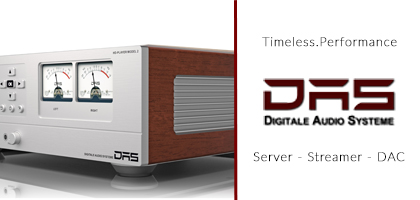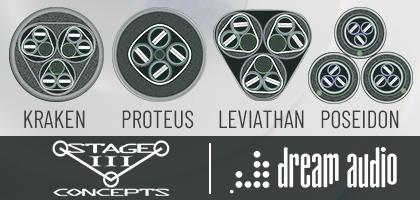No. 255 August 2025
- COVER REVIEW: YPSILON Hyperion ⸜ power amplifier • monoblock » GREECE
- REVIEW: CLOSER ACOUSTICS Blocks ⸜ loudspeakers (modular system) » POLAND
- REVIEW: EVERSOLO AMP-F10 ⸜ power amplifier – stereo + monoblocks » CHINA
- REVIEW: FOSI AUDIO i5 ⸜ open-back planar headphones » CHINA
- REVIEW: SFORZATO DSP-9EX ⸜ audio file player » JAPAN
- REVIEW: TOTALDAC d1-CD ⸜ compact disc transport » FRANCE
- REVIEW: VIVA AUDIO Egoista 2A3 ⸜ headphone amplifier • tube » ITALY
- MUSIC ⸜ Our Albums Series: KRZYSZTOF DUDA, Meditatio Laeta, GAD Records GAD CD 337, Compact Disc ⸜ 2025 » POLAND
- MUSIC ⸜ Our Albums Series: J.S. BACH, Suites For Unaccompanied Cello Complete, 2 x SACD + 2 x CD ⸜ 1965/2016 » JAPAN
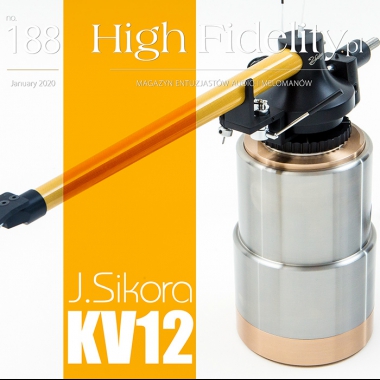

|

|
|
TEST RECORD • DEMO • SAMPLER

The A side of the album included recordings of the Dukes of Dixieland, the band that had been recording for the Audio Fidelity since 1954. The B contained a recording of a passing train, which was to demonstrate a new invention – the stereo. Only 500 copies of this demo disc were pressed. Three days later, Frey announced in Billboard Magazine that he would send a free copy to anyone in the music industry who would write to him on letterheads. The album was such a huge success that in March 1958, when Audio Fidelity prepared the commercial lot of the album, the label became famous, and Frey ever since was known as Mr. Stereo. Also in December 1957, the Bel Canto Records, another small label, produced their own stereo demonstration disk on multicolored vinyl, so that distributors of stereo devices would have a greater selection of stereo recordings for their presentations. And the latter actually resembled more of a circus and contemporary audio show than "technical" Audio Fidelity presentations. The showroom received turntables with transparent platters lit from below to present better not only the sound but also the colors of the record. Vinyl records sold very well throughout 1958 and early 1959. 
A German test record used to measure the specs of a turntable according to DIN standards. Released in 1969 As it was to be expected, in the following years more and more such recordings came out. Even the Mobile Fidelity, today known from remasters of other labels' recordings, started in this way. In March 1957, Brad Miller, its founder, along with his friend Jim Conell, recorded and released the first Mobile Fidelity album, with sound recordings of Southern Pacific steam locomotives; the record bore the symbol MF-1. Already in September 1958, Brad, traveling through Wyoming, Colorado and Nebraska, recorded train journeys using a specially purchased Ampex 601-2 stereo tape recorder and a pair of Electro-Voice microphones. The results of these recordings was used for the first stereo record released by this label bearing the MF-4 symbol. In the following years, each label wanted to have their own demo record with stereo material. Albums with recordings of passing trains became so widespread that at the end of the 1950s Billboard Magazine presented them in their own "train record" subcategory. Another type of recording that today we would call “sampler” were equally common. These were usually records with fragments of songs with popular or classical music, recorded so that the stereo effect was most audible. An example could be the Westminster disc, which included a fragment of Gershwin's piano concert, the overture finale for Rossini's Wilhelm Tell and Brazilian Willy Willy performed by the Ralph Font orchestra. | TEST RECORD Test records were also released in Poland. Almost all of them were "technical" ones, that is, contained test tracks for measurements. I know only one exception, the Sami słuchamy – sami sprawdzamy. Płyta demonstracyjno-testowa stereo by Polskie Nagrania "Muza", so-called EP 45 rpm, designation SN-0590, which also includes two stereo tracks for system evaluation. However, I do not know any more currently released record that would connect these two spheres, that is technical and musical ones. Thanks to Wojtek Padjas, who works for the RMF Classic radio station, but also is a music lover and vinyl records collector, this is about to change. We meet on the occasion of the release of his first after 1989, and in general one of the very few Polish test records, simply titled: Test Disc.This is not the first Wojtek's release, but the first one with music - his previous hit was the records used to anti-skating adjustment.  WOJCIECH PADJAS 
Wojciech Padjas visiting "High Fidelity" |
"We don't even realize how often we mistake the left and right channel cables and make wrong connections. This is not critical for rock or jazz recordings, but for the classics, it is fundamental. Piano in a Mozart concert on the right? Cello on the left? It is rather impossible. It also happened to me, hence the idea to start our album with the simplest stereo test known to us from the old days - "left channel, right channel". I invited Michał Woźniak, the long time producer of the Muzyka spod igły audition, and also a composer, and Paweł Ładniak, a mastering engineer for many vinyl releases to help me with the project. And with each coffee we drunk the project grew, and finally we decided to give birth to this “child” and present it to the world. The Płyta testowa album was a result of many conversations and the awareness that we needed to check if our system performed well. When wanting to evaluate our system and to do it quickly, we often look for records with the piano, violin, double bass, organ or trumpet. So we decided to ask fellow musicians to lend us fragments of their recordings, and in a few cases to record their instruments especially for us, so that we could listen to them and check how they sound at home. On the first side you will find sound material, and the second is for setting an anti-skating. Each recording lasts about one minute, which is enough to hear how our equipment behaves. Importantly, all the music material combined lasts only ten minutes, so we can quickly "x-ray" our system, and do it quite accurately. The performers include: Bartłomiej Oleś (drums), Marcin Oleś (double bass), Arkadiusz Suchara (bass), Roman Odoj (guitars), Tomasz Goliński (modular synthesizers), Maciej Tubis (pianos), and Michał Woźniak (organ, trumpets, triangle and other percussion instruments). 
The cover of the new test record The disc also includes test signals, starting from such an important signal as a 1 kHz sine wave (0 dB), used to correctly scale the audio signal indicators. Other test signals are: noise in phase, noise out of phase, pink noise and white noise. We also included some voices of nature on it: storm, ocean, rain, forest, a train (thus referring to the first test discs) and tram braking and the city noise. In addition, the records comes with a professional template that will allow you to correctly set up your cartridge. The record will be released in four versions: 200 g on transparent vinyl, "NATUREL" - this is a "pure" granulate without any coloring additives, and in two 180 g versions (transparent red and classic black). We really wanted it to be available to everyone, that's why the prices will start from only PLN 59. The records are pressed by the WMFono, from a DMM matrix, under the personal supervision of Adam Gałek. In terms of both mastering and pressing, it is an extremely difficult job. I, Wojciech Padjas, am responsible for the concept of the album, and Paweł "Bemol" Ładniak for the production and mastering. ♦
We talked a lot with Wojtek about this release - both two years ago, when the idea came to life, and now, just a few days ago. This is to be an album "for everyone". Affordable, but also handy. This is not a "reference" album in the sense that it offers the best sound you can find. Although the mastering was done very well, the source materials came from various studios, and the disc was cut from a digital file. It is supposed to be a record that you can always have h 
A test record released in 2001 by the German magazine „Image Hi-Fi”, that included signals to assess cartridge/tonearm resonances. Therefore, the "High Fidelity" magazine will happily become a patron of this release and put our logo on it. The album is to be released next year and as soon as it gets here, and actually, when Wojtek brings it to me, we will present it also to you. Let us encourage you to look for it and buy it. It is a release limited to only 500 pieces. ■ 
In this way the year 2019 comes to an end. This has been the fifteenth year of the "High Fidelity" and also the fifteenth year in which we have the pleasure to meet with you via the Internet - thank you very much for your constant support. We want to wish you all a beautiful, peaceful, warm Christmas and lot of happiness in the new year! Only coherent sounds, well-sounding systems, zero sibilants, and above all explosive dynamics and slamming bass :) Seriously - all the best, just 0be happy and make tones of new exciting musical discoveries. See you in 2020 !!! |
About Us |
We cooperate |
Patrons |
|
Our reviewers regularly contribute to “Enjoy the Music.com”, “Positive-Feedback.com”, “HiFiStatement.net” and “Hi-Fi Choice & Home Cinema. Edycja Polska” . "High Fidelity" is a monthly magazine dedicated to high quality sound. It has been published since May 1st, 2004. Up until October 2008, the magazine was called "High Fidelity OnLine", but since November 2008 it has been registered under the new title. "High Fidelity" is an online magazine, i.e. it is only published on the web. For the last few years it has been published both in Polish and in English. Thanks to our English section, the magazine has now a worldwide reach - statistics show that we have readers from almost every country in the world. Once a year, we prepare a printed edition of one of reviews published online. This unique, limited collector's edition is given to the visitors of the Audio Show in Warsaw, Poland, held in November of each year. For years, "High Fidelity" has been cooperating with other audio magazines, including “Enjoy the Music.com” and “Positive-Feedback.com” in the U.S. and “HiFiStatement.net” in Germany. Our reviews have also been published by “6moons.com”. You can contact any of our contributors by clicking his email address on our CONTACT page. |
 



|
   |
main page | archive | contact | kts
© 2009 HighFidelity, design by PikselStudio,
projektowanie stron www: Indecity
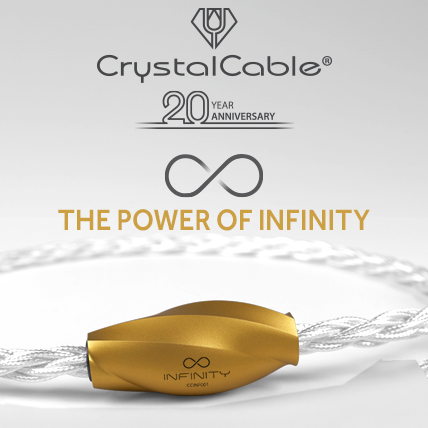


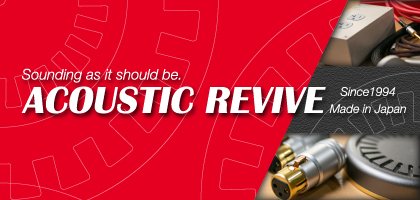

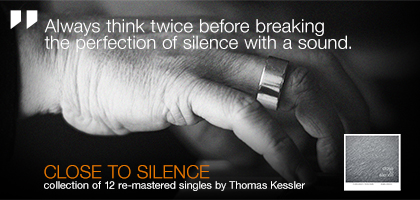

 n November 1957, a small label, the Audio Fidelity Records released the first mass-produced stereo record. Sidney Frey, the founder and president of the label, instructed Westrex engineers, owners of one of the two competing stereo disc cutting systems, to prepare a stereo disc before any of the major record companies does. The record was first presented on November 17th of the same year in the Times Auditorium, New York.
n November 1957, a small label, the Audio Fidelity Records released the first mass-produced stereo record. Sidney Frey, the founder and president of the label, instructed Westrex engineers, owners of one of the two competing stereo disc cutting systems, to prepare a stereo disc before any of the major record companies does. The record was first presented on November 17th of the same year in the Times Auditorium, New York. 
